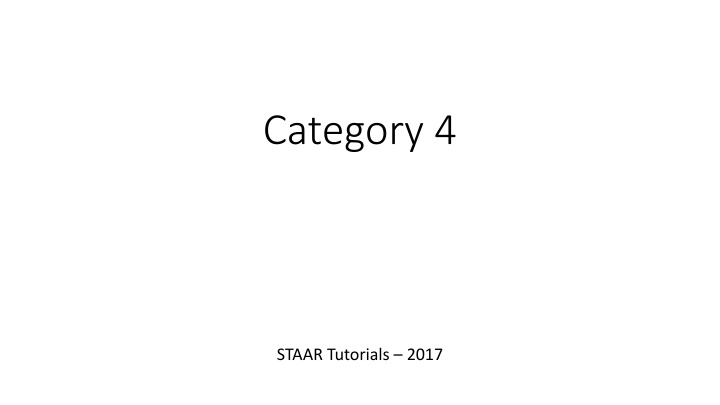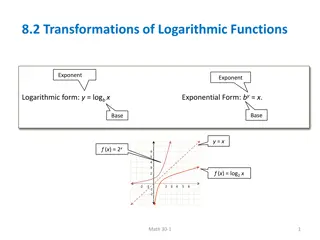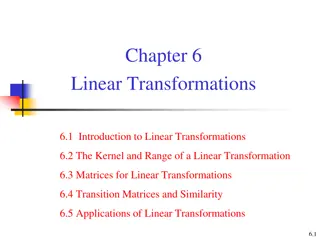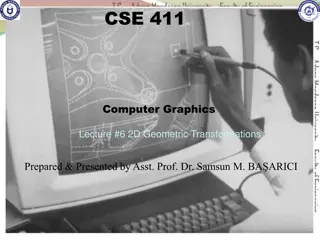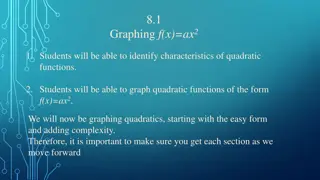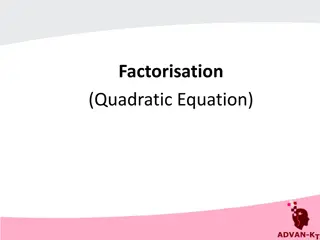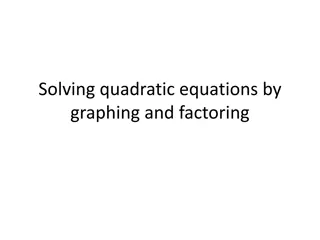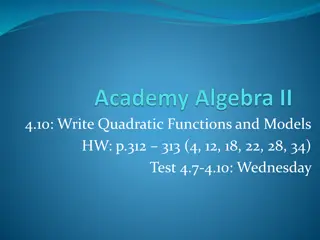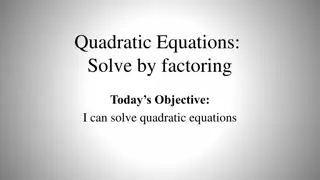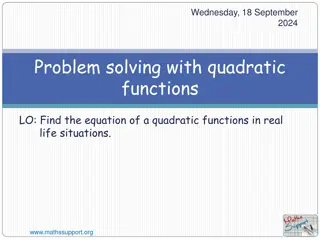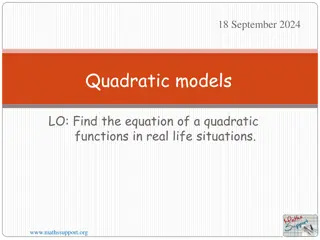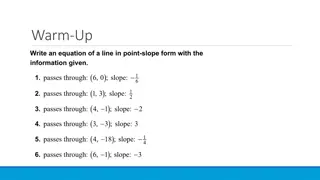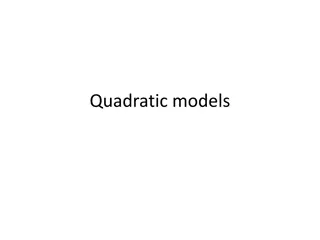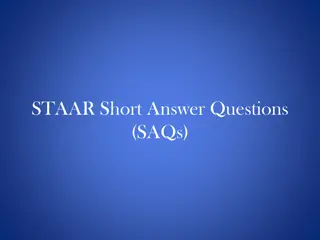STAAR Tutorials 2017 - Quadratic Functions and Transformations
In these tutorials, explore Quadratic Functions, Domain & Range, Form of Equations, Vertex Form, Writing Equations, Conversions, and Transformations. Understand how to shift, widen, narrow, or flip quadratic graphs with key concepts and examples.
Download Presentation

Please find below an Image/Link to download the presentation.
The content on the website is provided AS IS for your information and personal use only. It may not be sold, licensed, or shared on other websites without obtaining consent from the author.If you encounter any issues during the download, it is possible that the publisher has removed the file from their server.
You are allowed to download the files provided on this website for personal or commercial use, subject to the condition that they are used lawfully. All files are the property of their respective owners.
The content on the website is provided AS IS for your information and personal use only. It may not be sold, licensed, or shared on other websites without obtaining consent from the author.
E N D
Presentation Transcript
Category 4 STAAR Tutorials 2017
Vertex Form of a Quadratic h is the opposite of the x value in the vertex k is the y value in the vertex
Writing Quadratic Equations Given the Vertex and a Point
Convert from Vertex Form to Standard Form Vertex Form Expand (x 1)2 multiply using Box or FOIL Multiply by 3 using distributive property Combine like terms and put in standard form
Quadratic Transformations Quadratic Transformations The basic function y = ax + c has two basic transformations. Changes to a make the graph wider or narrower Changes to sign of a make the graph open up or down. Changes to c make the graph shift vertically (up or down)
Quadratic Transformations In the quadratic parent function a = 1 y = x or y = 1x Decreasing a to a fraction less than 1, (but still positive) makes the graph wider.
Quadratic Transformations, cont Increasing a to a number greater than 1 makes the graph narrower. If a is a negative number, the graph opens down
Quadratic Transformations, cont Effects on c Increasing c shifts the graph up Decreasing c shifts the graph down
Solving Quadratic Equations The solutions,roots, x-intercepts or zeros of a quadratic equation are the points where the parabola crosses the x-axis
Solving Quadratic Equations by Graphing You can solve a quadratic equation by graphing To solve by graphing, the equation must be in y = ax + bx + c form. Then just graph it in the calculator and see where the parabola crosses the x-axis Or look at the table to find the points that have y = 0 (usually 2 but could be one or none and may not always show up in the table)
Solving Quadratic Equations by Graphing Example: What are the roots of the quadratic equation x - x 6 = 0? x = -2 x = 3
Solving Quadratics Using the calculator Solving Quadratics Using the calculator Example: The area of a rectangle is 3x + 19x 14, and the width is x + 7. Which expression best describes the rectangle s length? A. (2x 3) B. (3x 2) C. (2x 7) D. (3x 7) A = length width 3x + 19x 14 = length (x + 7)
Solving Quadratics Using Solving Quadratics Using the Quadratic Formula the Quadratic Formula
Solve Quadratics by Factoring Solve Quadratics by Factoring
Solving by Completing the Square Solving by Completing the Square
Solving by Taking Square Roots Solving by Taking Square Roots If your Quadratic equation has no x (only x2 ), you can solve by taking the square root. Ex. x2 = 9 x2 +3 = 19 4x2 - 24 = 12
Interpreting Quadratic Graphs Pay attention to the labels on the x- and y- axes Read the question carefully Example: How much time elapses while the rocket is 600 feet above the ground? 4 seconds 5, A.09D
Parent Functions Parent Functions There are three parent functions on the STAAR test: Linear y = x (Y = 1x + 0) Exponential y = abx Quadratic y = x (Y = 1x2 + 0x + 0) M = 1 B = 0 Opens up 1 Vertex at (0, 0) y axis is axis of symmetry
